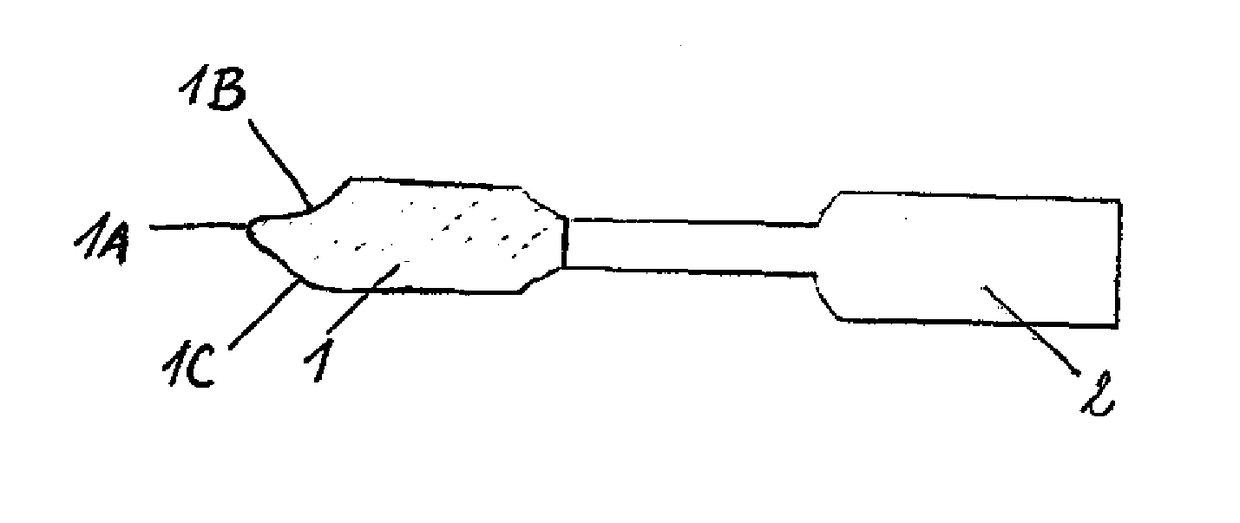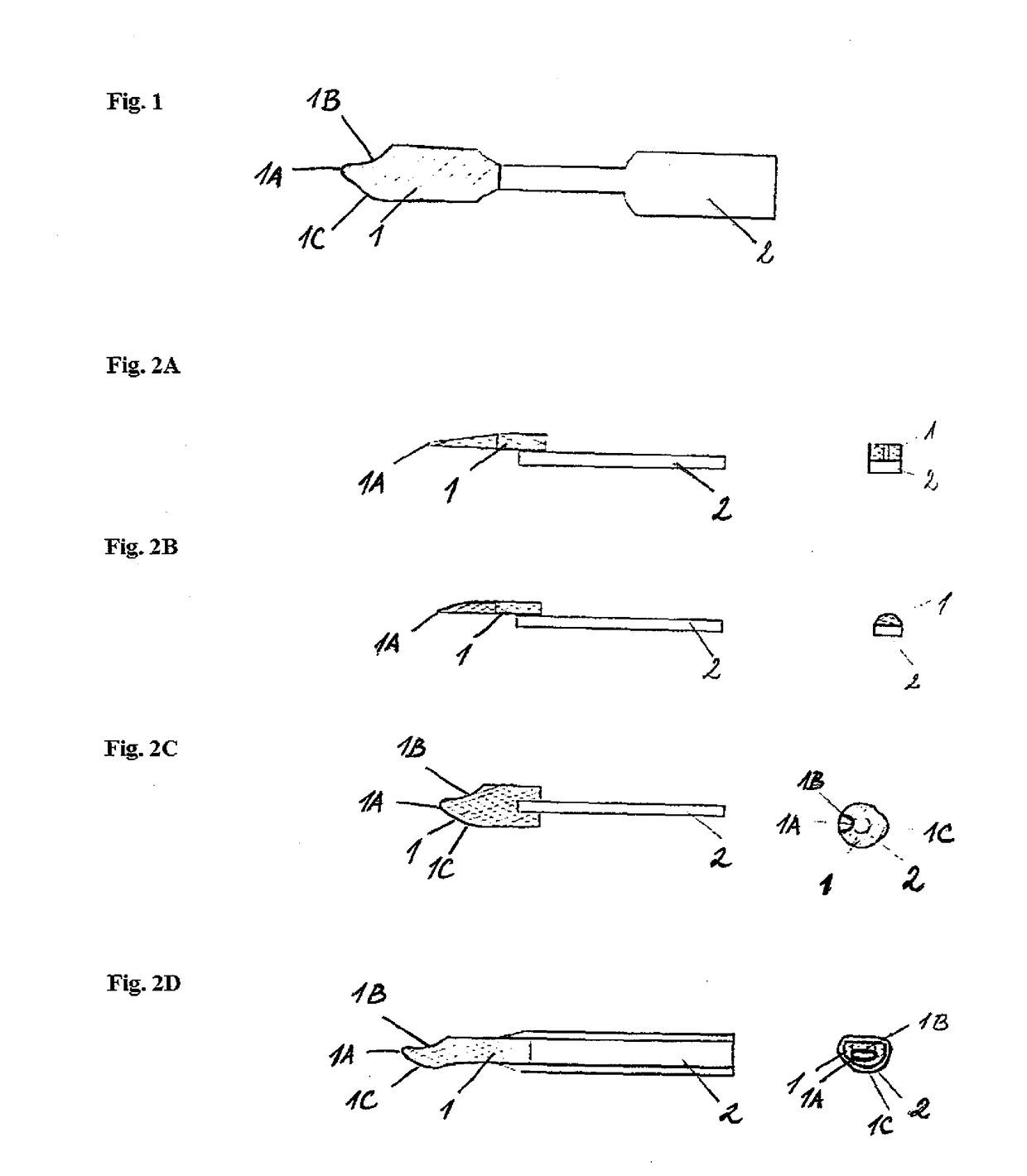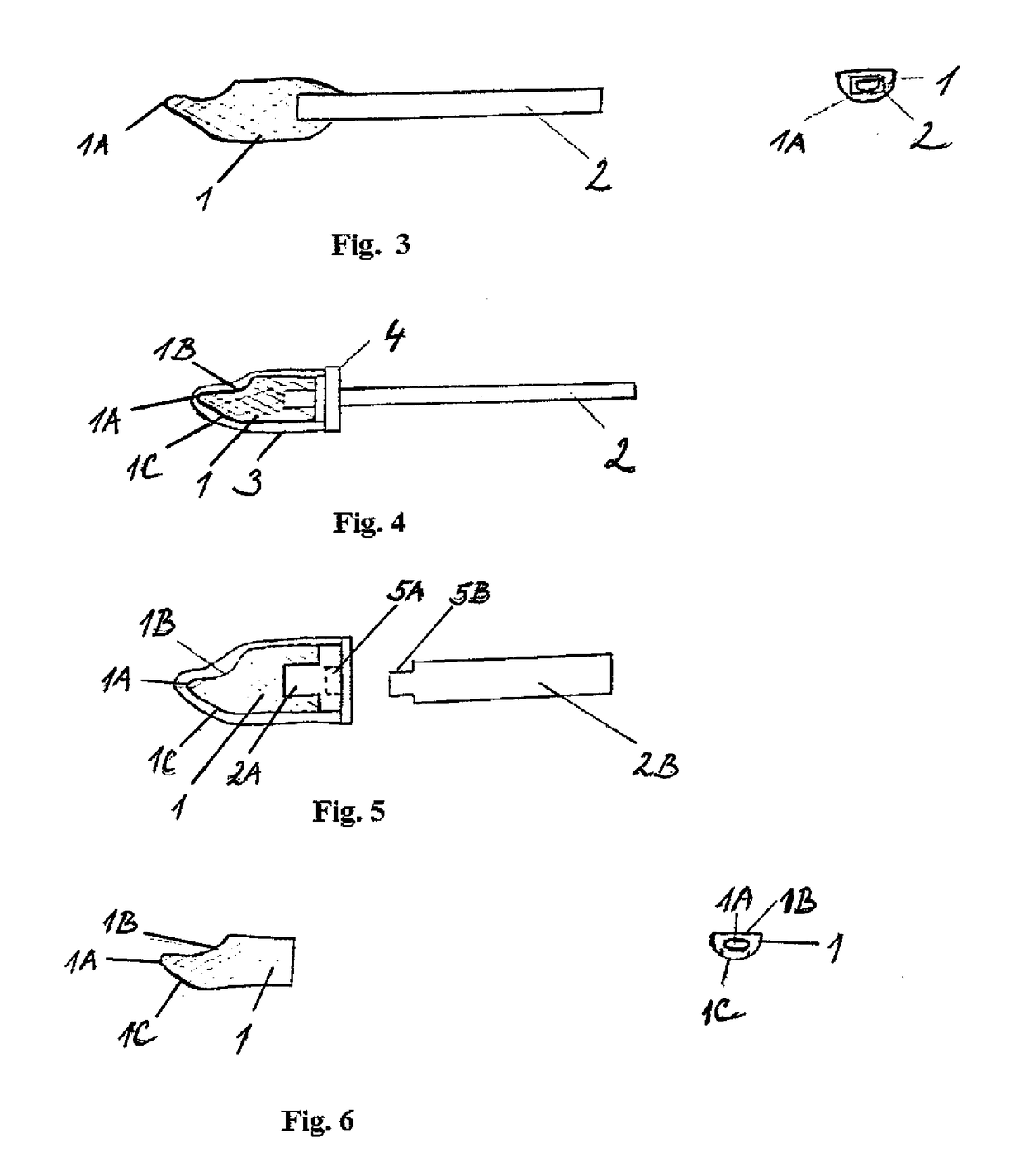Device for a manipulation with a contact lens within an eye area and a method of manufacturing such device
a technology for manipulating contact lenses and eye areas, which is applied in the field of manipulating contact lenses within eye areas, can solve the problems of difficult manipulation of contact lenses when applying contact lenses on the eye, infection may spread into the eye, and contact lenses are very often fouled
- Summary
- Abstract
- Description
- Claims
- Application Information
AI Technical Summary
Benefits of technology
Problems solved by technology
Method used
Image
Examples
example 1
[0045]The polyethylene container with a volume of 1.5 ml with cap is used primarily as a mini test-tube or sample container for small samples (FISCHER SCIENTIFIC, CATALOGUE No 2103.3502); it is used as a casting mould as well as a watertight packaging 3 (see FIG. 4 and FIG. 5) for the hydrogel functional part 1. The mould is modified by cutting off the cap, which is then replaced by the polyethylene part that is used as an anchor for the part 2A, the cap 4 and the connecting part 5A with a bayonet lock according to FIG. 5.
[0046]The mould is filled with a 10% PVA and 0.8% NaCl water solution, closed from above with said polyethylene part and subjected to 3 cycles of freezing to −20° C. and thawing to +20° C. The solution is prepared by dissolving PVA of a molecular weight 80 k Dalton and an hydrolysis level above 99% in an isotonic solution of NaCl at a temperature above 95° C. By recurrent freezing and thawing, the polymer is exuded in an insoluble form from the water and the porous...
example 2
[0048]The polyethylene mould from the example 1 is partly filled with a de-aerated solution of 30% by weight of HEMA in a 1% aqueous solution of ammonium sulphate. HEMA contains 0.25% by weight of ethylene glycol dimethacrylate and 5% by weight of triethylene glycol dimethacrylate. The filled mould is closed then with the rubber cap 4, through which a polypropylene handle 2 passes tightly as seen on FIG. 4. The closed moulds are heated in a water bath to 80° C. over a period of 3 hours, being cooled thereafter and stored in a plastic container. Thanks to the thermal polymerisation, a hydrogel sponge constituting the functional part 1 according to FIG. 4 is created in the mould formed by the packaging 3. Before its use the hydrogel functional part 1 is removed from the packaging 3 using the handle 2 and the rounded applicator end 1A of the functional part 1 is used for the manipulation with the contact lens. After the manipulation with the contact lens the functional part 1 including...
example 3
[0049]The procedure from example 2 is repeated up to the end of the thermal polymerisation. Then, the functional part 1 with cap 4 and the handle 2 from FIG. 4 is removed from the mould; the cap 4 is removed and recycled for further use. The functional part 1 with the attached handle 2 are washed then in distilled water and soaked in a 30% glycerine water solution. After 24 hours, the excess solution is drained by spinning and the parts are dried in the air for 12 hours. The water partly evaporates from the functional part 1 and a concentrated glycerine is retained in it, serving as a softener and partly also as a hydrogel preservative. The finished product is sealed in a polyethylene foil.
[0050]Before its use the foil is torn, the product is taken out and used for the manipulation with the contact lens into the eye area either directly, or after moistening with an ophthalmic solution. When using the device for the manipulation with the contact lens the device according to the examp...
PUM
 Login to View More
Login to View More Abstract
Description
Claims
Application Information
 Login to View More
Login to View More - R&D
- Intellectual Property
- Life Sciences
- Materials
- Tech Scout
- Unparalleled Data Quality
- Higher Quality Content
- 60% Fewer Hallucinations
Browse by: Latest US Patents, China's latest patents, Technical Efficacy Thesaurus, Application Domain, Technology Topic, Popular Technical Reports.
© 2025 PatSnap. All rights reserved.Legal|Privacy policy|Modern Slavery Act Transparency Statement|Sitemap|About US| Contact US: help@patsnap.com



